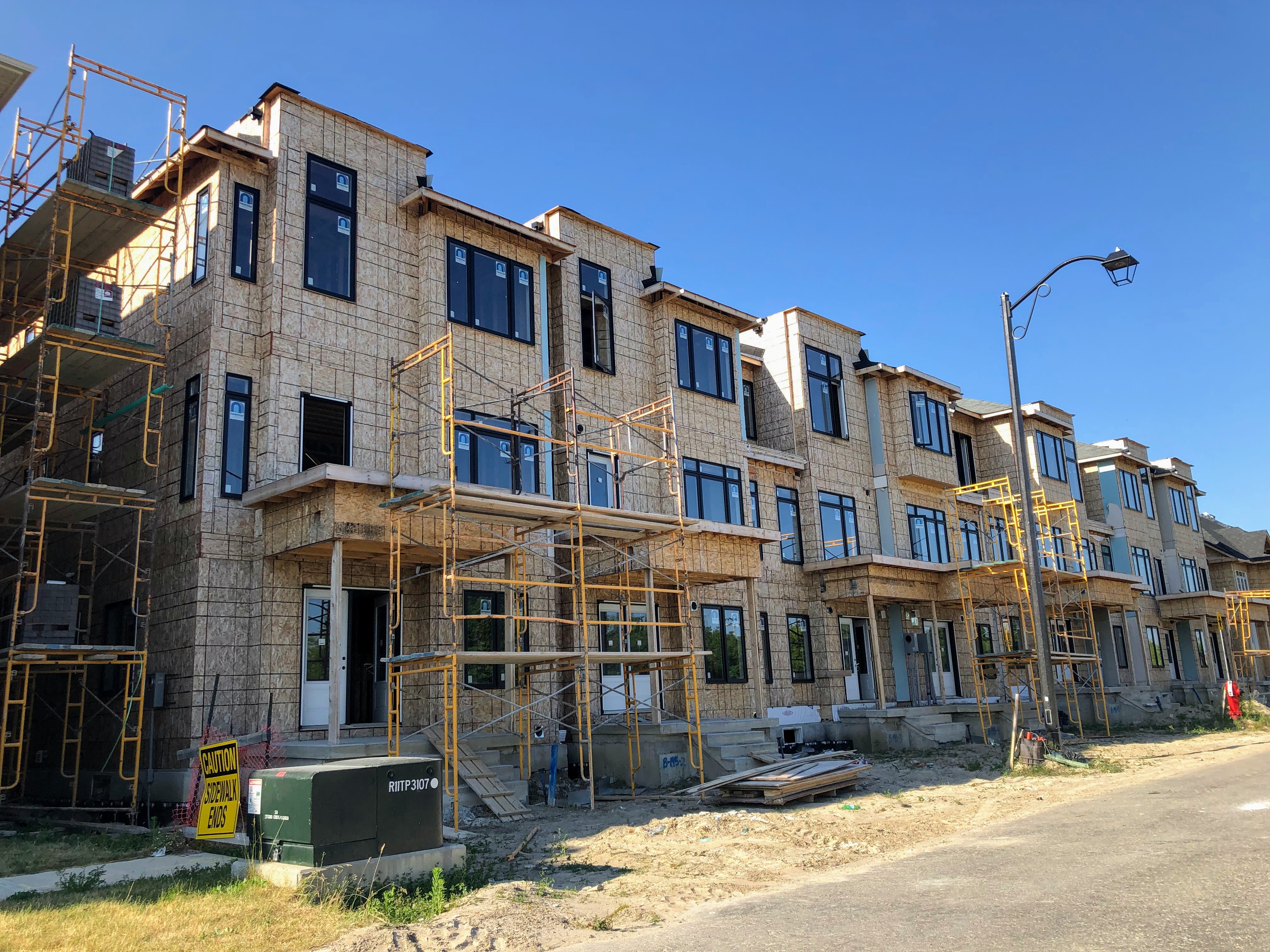


The Canadian Home Builders’ Association (CHBA) 2025 Q2 Housing Market Index (HMI) saw little change since last quarter, with builders remaining pessimistic about sales conditions.
CHBA’s single-family HMI is 24.9 out of 100, and the multi-family HMI is 22.8. According to the report, numbers were at near-record lows and in negative builder sentiment territory for the twelfth straight quarter, particularly in Ontario and British Columbia.
Of note this quarter, CHBA noted that there a noticeable downtrend in the sales conditions of multi-family developments in the Prairie provinces since last year. A sudden downward trend indicates that lower housing starts are in store for the Prairies if the status quo remains unchanged.
While the announcement at the end of May of the new First-Time Home Buyers’ GST Rebate (FTHB GST Rebate) was positive news, the delay in implementation until the fall is keeping prospective buyers on the sidelines, and creating a worse drag on new homes sales, at least for those who build entry-level product.
While first-time buyers are eligible for the new FTHB GST Rebate for any home purchased after May 27, 2025, the report noted that until that legislation goes through, there is no mechanism for builders to action the rebate. This means that buyers are waiting to sign contracts, further depressing new home construction. For those who build for the move-up market, which is the majority of buyers in Canada, the new FTHB GST Rebate will not help with affordability.
“The markets in Ontario and British Columbia, in terms of sales of units for ownership, remain in horrible shape. The GST relief that was promised and would help to a degree is now instead doing the opposite and slowing sales in all regions, since while buyers ‘qualify’ now, they remain uncertain until the legislation passes. It is imperative that the legislation actioning the new First-Time Home Buyers’ GST Rebate be passed as soon as parliament resumes in September to help make housing more affordable,” said CHBA CEO Kevin Lee. “To really make a difference, the GST relief should also be broadened to include all purchasers of new homes, and the threshold increased to $1.5 million and $2 million in more expensive markets like Vancouver and Toronto. It should also be applicable to Accessory Dwelling Units (ADUs) and secondary suites, which are important forms of new housing.”
Affordability challenges at the heart of Canada’s ongoing housing crisis stem from a shortage of homes. Housing starts data released from CMHC shows the total monthly SAAR of housing starts for all areas in Canada was flat at 0.4 per cent in June in comparison to May.
Interest rates have come down slightly over the past year, and the federal government has made some strategic policy moves, such as 30-year amortizations for first-time buyers and buyers of new construction homes, lack of consumer confidence driven by the trade war, and high construction costs continue to suppress new home buying activity, especially in the more expensive markets where the most new housing is needed.
The ongoing lack of sales has nearly one out of five builders extremely concerned about the wellbeing of their business over the next 12 months, and 35 per cent have had to make layoffs, which is up from 21 per cent this time last year.
While builders and contractors have reported retaining their workers in recent times in hope of a market turnaround, the report noted that this may no longer be feasible.
“The housing affordability and supply crisis is complex and there is no magic bullet solution,” said Lee. “Canada needs comprehensive and supportive government policy at the municipal, provincial, and federal levels to help build more homes and improve affordability. We need to continue to value careers in the skilled trades, developing our workforce and ensuring our immigration policies attract workers into the sector. Options like factory-built construction can have a lot of potential, but without sustained demand and certainty of sales — an elusive state in the boom-bust housing market — those kinds of investments are risky and not realistic to expect. As we heard from builders in this quarter’s HMI, industry adoption remains slow due to lack of demand and the substantial overhead needed to operate a factory. Policies that drive better affordability and increased housing supply in general are needed to also unlock the potential of factory-built approaches. It took Canada years of underbuilding to get into this situation, and we won’t get out of it overnight, but there is a lot that can be done if all levels of government step forward.”